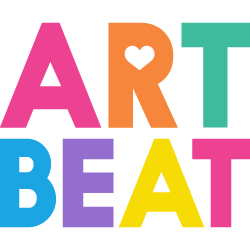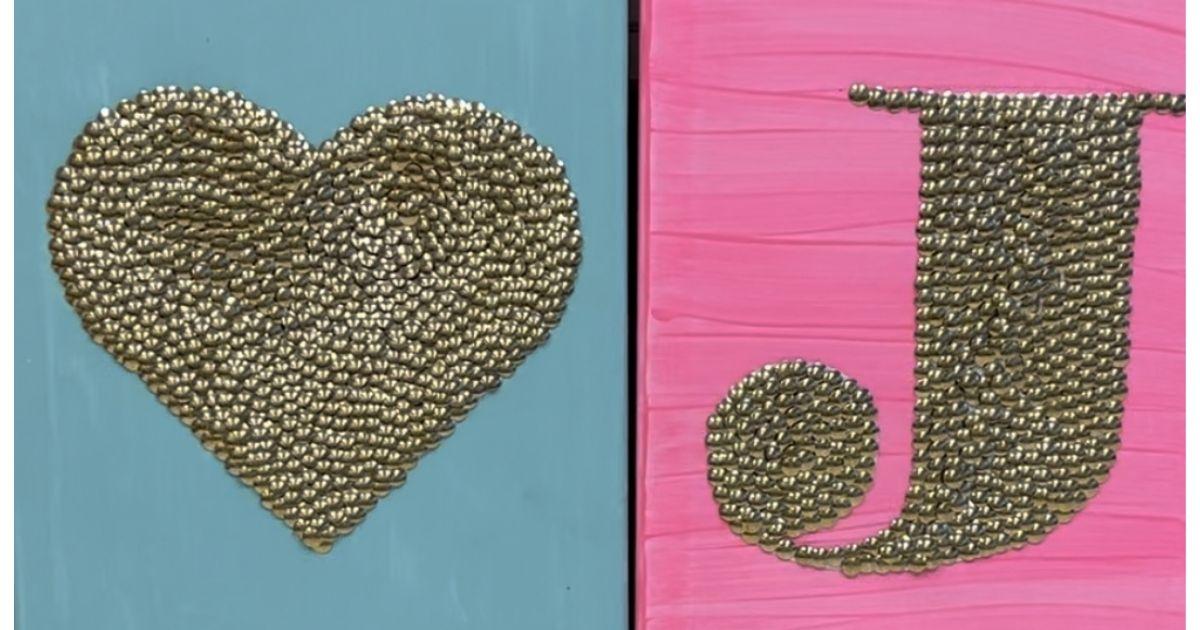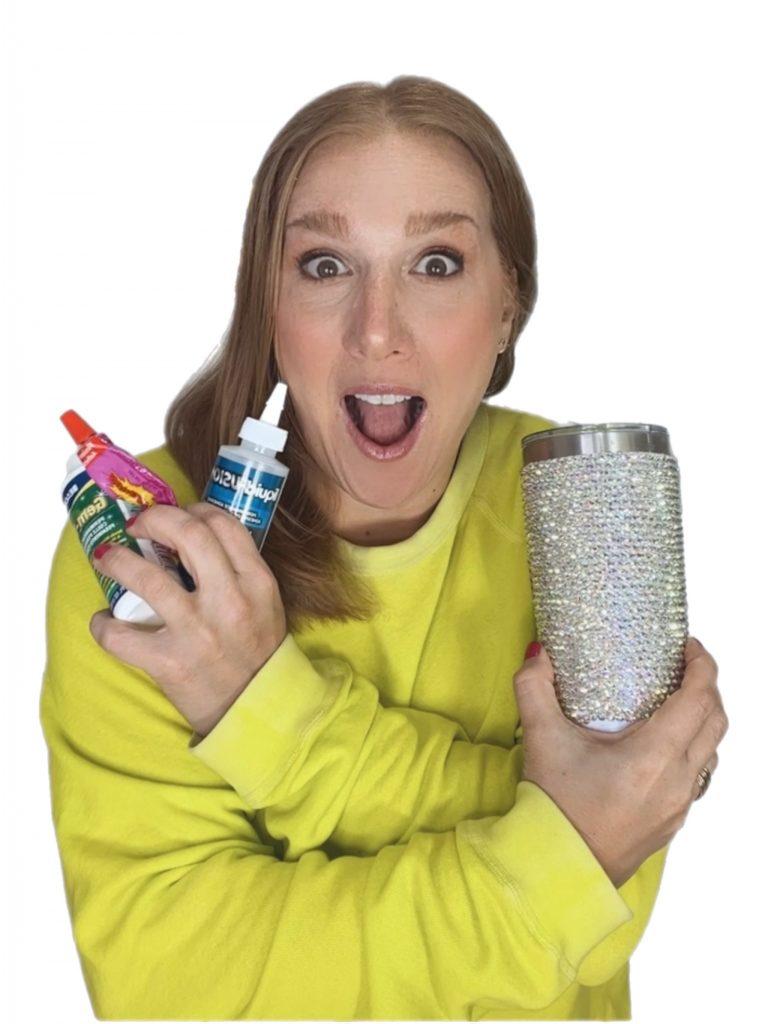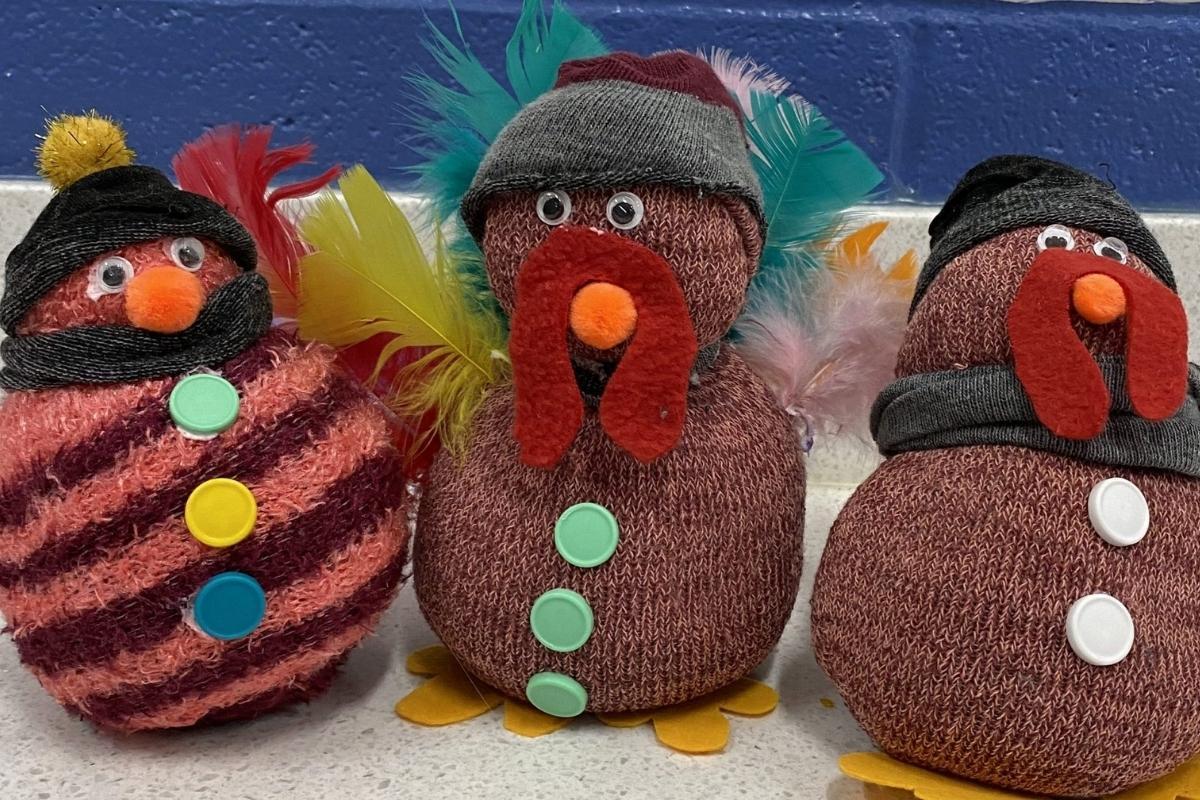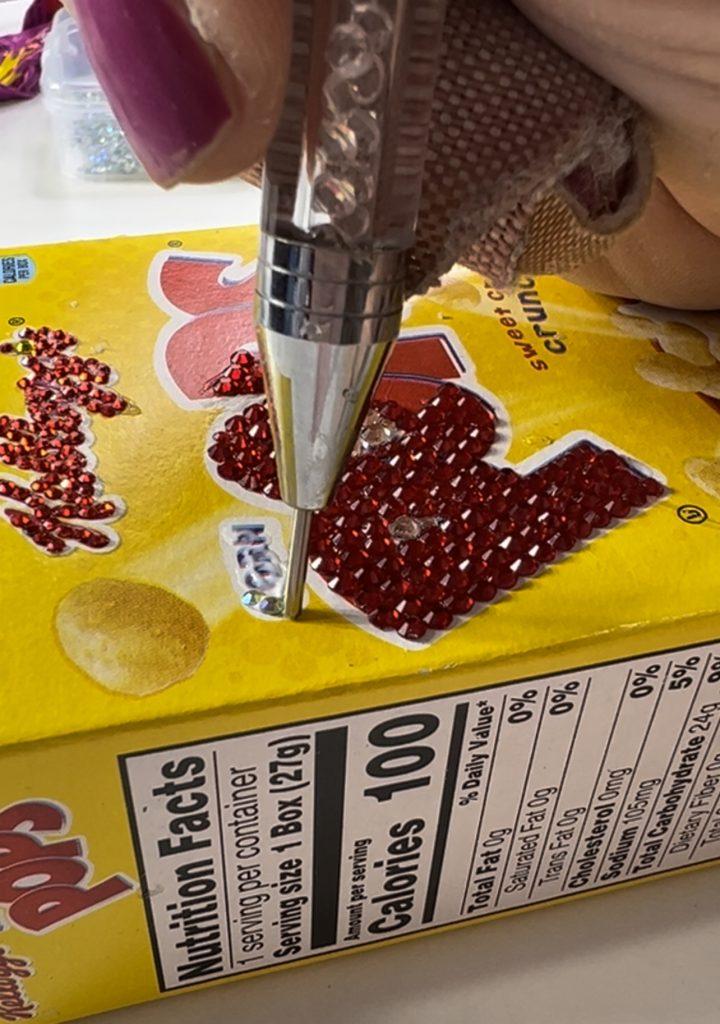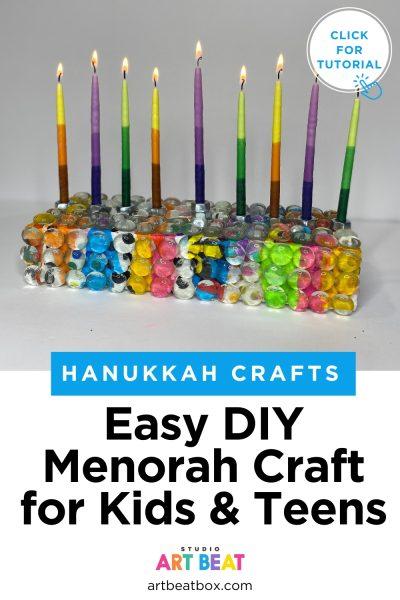Gelli printing is quickly becoming a favorite printmaking technique. With just a little paint and a few objects, it will quickly become one of your favorite things, too! Printmaking has a rich history dating back centuries, evolving from traditional methods to contemporary techniques that blend innovation with tradition.
Gelli printing, a relatively modern form of printmaking, offers an accessible and versatile approach for beginners and experienced artists alike. Whether you’re a seasoned artist looking to explore new techniques or a beginner eager to delve into the world of printmaking, Gelli printing provides a rewarding and engaging experience. Gelli printing is a fun way to experiment with printing techniques without needing a ton of space.
What is Gelli Printing?
Gelli printing, also known as gel plate printing, involves creating prints using a gel printing plate. The gel plate has a similar feeling to gelatin yet holds up without refrigeration. Unlike traditional printmaking methods that require carving into materials like wood or linoleum, Gelli printing utilizes a reusable gel plate made from a soft, gel-like substance. These plates come in various sizes and thicknesses, offering flexibility for different printing projects.
The process of Gelli printing is straightforward and doesn’t require a printing press or specialized equipment, making it ideal for beginners or those with limited space. Artists apply layers of acrylic paint or printing ink onto the gel plate, manipulate the paint with various tools, and then transfer the image onto paper or fabric by pressing it firmly onto the plate. The result is a unique, one-of-a-kind print characterized by vibrant colors, intricate textures, and spontaneous patterns.
Getting Started with Gelli Printing
Before diving into Gelli printing, it’s essential to gather the necessary materials.
Here’s what you’ll need to begin your gel printmaking journey:
Affiliate disclaimer: Although I stand by all of the products I use, I can receive a small commission from any products purchased via my affiliate links.
- Gel Printing Plate: Invest in a high-quality gel printing plate in a size that suits your preferences and project requirements. Gel plates are available in various thicknesses, with thicker plates offering more durability and stability. The most commonly available gel plates are made by Gelli Arts. They are high quality and come in a variety of sizes. While the price point is high, these really do stand the test of time. I also love that they come in a clamshell package which makes it easy to store. Do not throw away the original packaging.
- Acrylic Paints or Stazon Inks: Choose a selection of acrylic paints or printing inks in your preferred colors. Acrylic paints are readily available, and affordable, and offer vibrant hues suitable for Gelli printing. Alternatively, printing inks provide a smoother consistency and faster drying time, ideal for creating multiple layers without smudging.
- Brayer: A brayer, or roller, is used to spread the paint evenly across the gel plate. Opt for a soft rubber brayer that glides smoothly over the surface without leaving streaks or marks.
- Paper or Fabric: Choose paper or fabric for printing your designs. In my experience, printer paper and deli paper work best. Some people like to experiment with tissue paper as well. Thicker papers, such as watercolor paper do not work well as well because they have more texture and they absorb more paint and capture intricate details. Fabric can be used to create unique textile prints suitable for art quilts, garments, or mixed-media projects. The best part is that you can make your very own papers. I would not recommend using glossy photo paper, however, gelli printing is an open ended experience, so feel free to experiment with any type of paper and see what beautiful prints you will create!
- Stencils, Texture Plates, and Found Objects: Enhance your Gelli prints by incorporating stencils, texture plates, or found objects into your designs. These tools add depth, dimension, and visual interest to your prints, allowing you to experiment with different patterns and motifs. Personally, I’ve played around with bubble wrap, feathers, string, stencils and other fun textures.
*I love ordering supplies on Amazon because there are tons of selection results, free shipping (typically ships within a few business days) and it’s never final sale so if you change your mind, you can send the supplies back. Check out my favorite items on my Amazon storefront. You’ll find a full page of all of my favorite things!
Creating Gelli prints: A step-by-step guide
Now that you have your materials assembled, let’s explore the step-by-step process of creating Gelli prints:
Step 1: Prepare your workspace:

Set up a clean and spacious workspace with ample lighting and ventilation. Lay down protective covering, such as a plastic tablecloth or old newspapers, to prevent paint from staining your work surface. Gelli plate printing is messy and you’ll want to be sure to have a paper towel or baby wipes on hand for clean up. I also like to take out everything I’ll be using before starting. Take out all of the art supplies you plan to use. You will want to start on a flat, clean surface so that the gelli plate can be level.
Step 2: Apply paint to the gel plate:
Squeeze a small amount of acrylic paint or printing ink onto the gel plate. When teaching, I tell my students to put several dots of paint in different spots on the gel plate. They should be around the size of a chocolate chip.
Step 3: Use a brayer to spread the paint:
Using a brayer, begin to spread the paint onto the gelli plate. Lift the brayer from time to time to spread the paint evenly. If you have too much paint, simply roll the brayer onto a plain piece of paper. Experiment with different color combinations, layering techniques, and paint application methods to achieve desired effects. Be sure not to use too much paint – a little bit goes a long way! If you are working with fabric, be sure to use fabric paints. You can use alcohol inks, ink pads and acrylic paints.
If you are wanting to make an image transfer, you can experiment with gel medium and/or an ink pad. When you are doing your first print on a brand new clean plate, start with a bright color rather than white so that you can see the magic of the gelli print. Next you can begin using a dark color for your second print to mix things up. Keep making print after print until you get the groove of how to use the brayer and what works best in terms of color combinations. After you have made a handful of simple prints, the next step is to start experimenting.
Step 3: Add texture and design elements:

Once the paint is evenly distributed, use stencils, texture plates, or found objects to add texture and design elements to your print. Place the stencil or object onto the gel plate and gently press it down to transfer the pattern onto the paint layer. If you do not own stencils, make them simply by cutting shapes of paper.
I love the way feathers look when gel printing – the more texture, the better! You can do your first pull onto a blank piece of paper or you can use one of your simple monochromatic background prints to add beautiful layers. Once you get comfortable with gelli printing, you can begin to experiment with different things. Since the the gelli plate is a smooth surface, you can try out different techniques to make your own prints extra special
Step 4: Manipulate the Paint
Use a variety of tools, such as brushes, textures, or even your fingers, to manipulate the paint on the gel plate. Create swirls, lines, or abstract shapes by dragging, blending, or scraping the paint across the surface of the plate. Don’t be afraid to experiment and embrace spontaneity!
Step 5: Print Your Design
Once you’re satisfied with your painted design, carefully place a sheet of paper or fabric onto the gel plate, ensuring full contact with the painted surface. Gently press down on the paper or fabric with your hands, using even pressure to transfer the paint onto the substrate. Once you like your first layer, feel free to use that same piece of paper to make a second print. If there is still paint remaining on the plate, you can actually pull a third print with the remnants. These are called ghost prints.
Step 6: Peel away the print
Carefully peel away the paper or fabric from the gel plate to reveal your Gelli print. Admire the unique patterns, textures, and colors that have transferred onto the substrate. Allow the print to dry completely before experimenting with additional layers or embellishments.
How to Clean the Gelli Plate

When you’re finished printing (or even at times during printing), you might want to start a new set of gel prints with completely clean, smooth surfaces. Personally I like little hints of old paint in my prints, but if you’re looking for a fresh start, these three methods will yield the best results:
1. Apply clear tape or masking tape to your gelli plate and peel. It should remove the paint. You can also use clear packing tapes and use them in your mixed media art.
2. Paint Apply paint and then place a piece of paper on top of the paint. Wait for the paint to dry and remove the paper
3. Baby oil or coconut oil – spread and rub with a paper towel

I have tried using warm water, too. It works if the paint is fresh, but for stubborn paint stains, use the method above.
How to clean the brayer in Gelli printing
Sometimes brayers get a lot of stubborn paint residue. To remove the paint, fill a basin with warm water and dish soap. Remove the rollers from the brayer handles and place them into the warm bath. Typically I leave them overnight and then the paint skins can easily be scrubbed off. Works every time! Be sure not to use anything too abrasive or a sharp object that might affect the smoothness of the roller – you do not want nicks of scratches on your rollers.
Techniques and tips for Gelli Printing
Once you’ve mastered the basics of Gelli printing, you can explore advanced techniques and experiment with different materials to expand your creative repertoire. Here are some tips and ideas to enhance your Gelli printing experience:
- Layering: Experiment with layering multiple colors and textures to create depth and complexity in your prints. Allow each layer to dry before adding subsequent layers to prevent smudging or blending.
- Monoprinting: Embrace the spontaneity of monoprinting by creating one-of-a-kind prints without repeating the same design. Use a variety of mark-making tools, such as brushes, sponges, or found objects, to create unique patterns and textures on each print.
- Collage and Mixed Media: Incorporate collage elements, such as torn paper, fabric scraps, or found objects, into your Gelli prints to add visual interest and depth. Experiment with different adhesives and layering techniques to seamlessly integrate collage elements into your compositions.
- Negative Space Printing: Explore the concept of negative space by selectively removing paint from the gel plate to create white or blank areas within your prints. Use masking tape, stencils, or precision tools to define shapes and boundaries within your designs.
- Experiment with Surfaces: Expand your Gelli printing repertoire by experimenting with a variety of surfaces beyond paper, such as fabric, wood, or canvas. Each surface offers unique texture, absorbency, and durability, allowing you to explore different effects and applications.
- Clean and Maintain Your Gel Plate: Properly clean and maintain your gel plate after each printing session to prolong its lifespan and ensure optimal performance. Use mild soap and water to gently remove excess paint and debris from the surface, avoiding harsh solvents or abrasive cleaners that may damage the gel plate.
FAQ about Gelli Plate Printing
Is Gelli printing a good project to do with kids?
Yes and no. Yes because it is open ended and fosters creativity and experimentation. In my experience, gelli plate printing is a good technique to use if you want to make collage papers for a future project or if you have a specific goal in mind. I once did gelli printing as an open-ended experience and the kids did not love it.
But when I did it again and told them they’d be making collage papers, the kids were much more excited. My advice is to keep the project simple – do not teach them how to do ombre on their first try. Focus just on stencils and layers. After the first time, you can begin adding in found objects, laser prints or other design elements.
Can you transfer images from a magazine onto a gelli plate?
Yes! There are several ways to transfer magazine images onto a gelli plate. This takes a bit of trial and error and it is not fool proof. A magazine transfer is when the dark colors in the ink on the magazine page resist the ink or paint on your gelli plate. Here are some ways to do magazine transfers:
- Add a hearty layer of Stazon ink and let it dry completely. You can use acrylic paint for this step, but the results will not be as successful as they will be if you use the Stazon inks.
- Using your brayer, add a thin layer of acrylic paint. For magazine transfers, you will want to use a very high quality paint like golden acrylics.
- Place the magazine image on top when the paint is wet. It is best to use high quality magazines like Vogue or Travel and Leisure because the pages are a bit thicker.
- Using your hands, rub lightly. Make sure there are no air bubbles.
- Gently lift one corner to see if the magazine image has transferred. If not, use your hands to rub the surface a bit more
- Remove the magazine page to reveal the image on your gelli plate. Clean up any background paint if you do not want it there. You can use a baby wipe or a wet lint-free cloth.
- Add a thin layer of any color paint to pick up the image. Be sure to spread evenly.
- Place a piece of paper onto the gelli plate and gently rub with your hands.
Can you use oil paints for gelli printing?
Oil paints are not recommended for gelli printing because they do not dry quickly enough. Technically, yes, you can use them and they will not ruin a gelli plate. However, they don’t work as well as acrylics in my experience.
Can you print images on your computer to do gelli plate transfers?
Yes! You can absolutely do this. Again, this method is really fun, but not guaranteed to work every time. Still, in my experience, it is worth it to experiment and in a few simple steps, you’ll have a beautiful print. You can print quotes, words, whatever floats your boat! Here’s how to do a printed transfer:
- Print an image from your computer onto a laser jet printer. Ink jet printers will not work – the ink does not work in the same way as it does with laser printers. Be sure to print the words extra dark
- Add a thin layer of black acrylic paint to the gel plate surface. Use your prayer to spread the paint onto the surface of the gel plate. Make sure you have a thin, even layer. Be sure the top of the gel plate is completely covered with high quality acrylic paint. It is important to use the highest quality black acrylic for this step. I have found that the thicker, heavier bodied acrylic paints work best. I specifically love this brand.
- Place the laser print onto the wet paint and rub gently.
- Quickly remove the laser print to reveal the words or images from the print-out. The words will be in reverse. Do not worry!
- Clean off any background paint using a baby wipe or a lint free cloth. You can also use a q-tip for tight spots.
- Let the gelli plate ink dry completely. You can speed this up by using a blow dryer.
- Add a thin layer of matte gel medium. Let dry.
- Add a layer of paint onto the surface of the gelli plate. You can use your roller or do some reverse painting. Let each layer dry. Feel free to experiment with stencils or textures.
- Once all of the layers are dry, add one final layer in the color of your choice. Put a fresh piece of cardstock on top of the gelli plate and rub firmly. Place books on top and let sit for at least an hour.
- Remove paper to reveal the print. If you want to make subsequent prints, you will need a fresh print out.
To see the laser technique in action, check out this video.
What textures or elements can I use on my gelli plate?
Literally anything! Experiment and play around to see what works well for you. Here are some of my personal favorites:
- feathers
- string
- stencils
- fingers
- flowers
- leaves
- plastic wrap
- bubble wrap
- stamps
- fabrics
- onion net or food packaging
- stickers
- legos
- lace
What happens if I let the paint dry completely onto my gelli plate? Is the plate ruined?
No! Simply add a layer of fresh paint and then add a sheet of paper to pull the print. Both layers of paint will be removed.
Can you make a gelli print without a brayer?
Yes! You can apply paint with a paintbrush. You can also apply paint with a sponge or a makeup wedge.
Can you use pastels on a gelli plate?
Yes! The best way to work with pastels is to do the following:
- Place a stencil onto your gelli plate
- Use a makeup wedge to sponge on the paint
- Let dry
- Take pan pastels and apply with a brush or cotton swab. Apply wherever you want an extra layer of color.
- Add a layer of white paint
- Add paper and rub with hands
- Peel and reveal!
Can you use felt tip markers on a gelli plate?
Yes you can! Experiment and play around. Once you color onto the gelli plate, let dry and add a layer of white paint. Alternatively, you can just add the felt tip marker and use the gelli plate as a stamp.
How do you use feathers with a gelli plate?
- Start by painting the gelli plate using a brayer
- Add your feathers
- Add paper and rub gently
- Remove the paper and the feathers
- Add a new layer of paint onto the surface of the gelli plate using your brayer
Can you use alcohol inks on a gelli plate?
Yes! You can paint with alcohol inks.
- Add a stencil to your gelli plate
- Add alcohol ink and let dry completely
- Add matte medium using a brayer
- place a piece of paper onto the matte medium to reveal print.
Can you use crayons on a gelli plate?
Yes! Here’s how to do it:
- Draw with crayon onto a piece of paper
- Using your brayer, apply paint to the surface of the gelli plate
- Place the paper (with the crayon onto the surface of the gelli plate
- Where there is crayon, the ink will have resisted. Experiment with layers and be sure to make an additional ghost print.
Conclusion
Gelli printing offers an exciting and accessible entry point into the world of printmaking, allowing artists of all skill levels to unleash their creativity and explore endless possibilities. Whether you’re drawn to vibrant colors, intricate textures, or spontaneous patterns, Gelli printing provides a versatile platform for artistic expression and experimentation. By embracing the process of exploration and discovery, you can unlock your creative potential and produce captivating prints that reflect your unique vision and style. So gather your materials, unleash your imagination, and embark on a journey of discovery through the colorful and captivating world of Gelli printing.
Did you love this blog post? If so, you probably love making things! Be sure to check out this painting idea!
